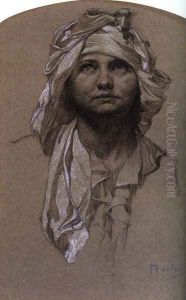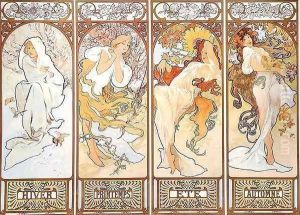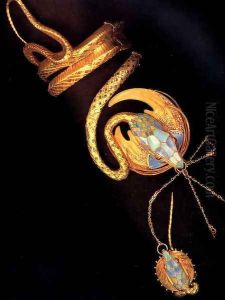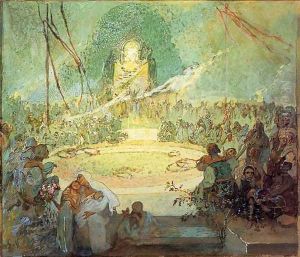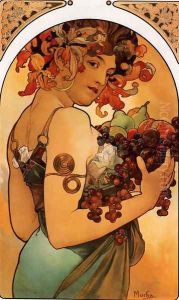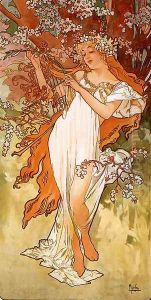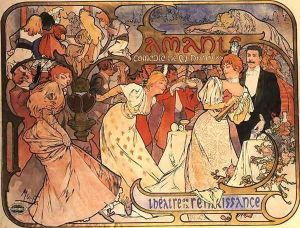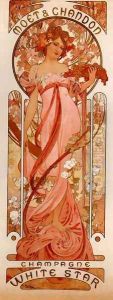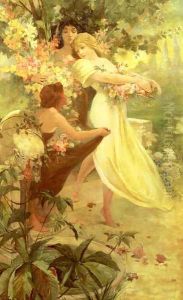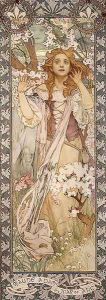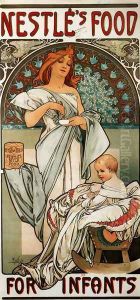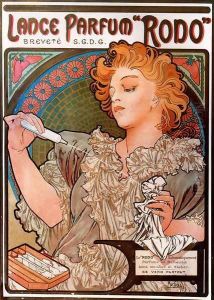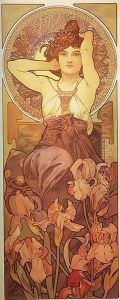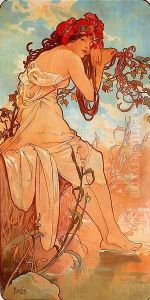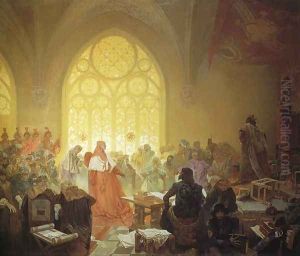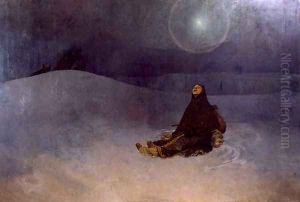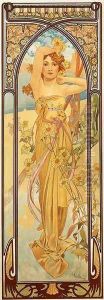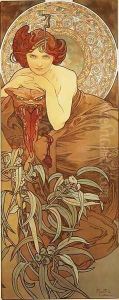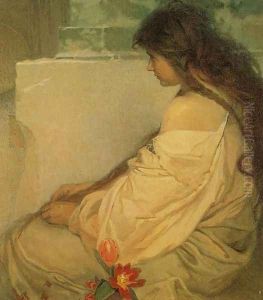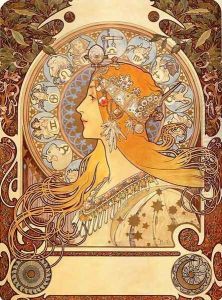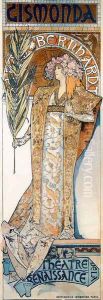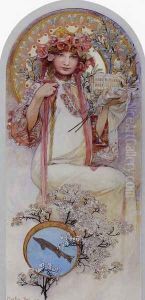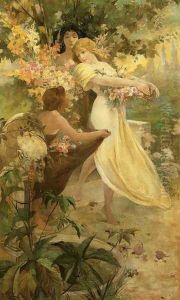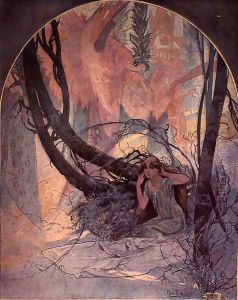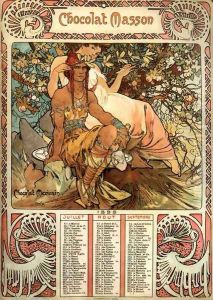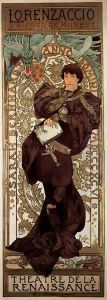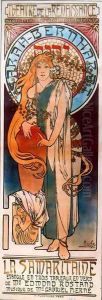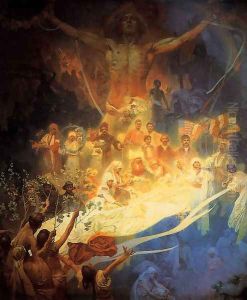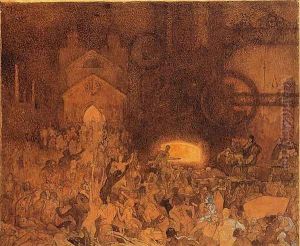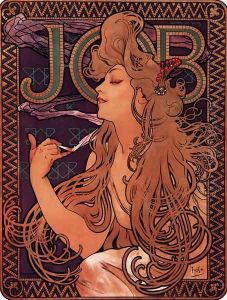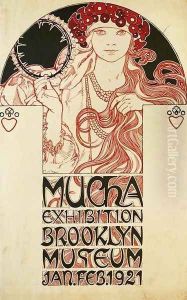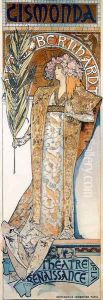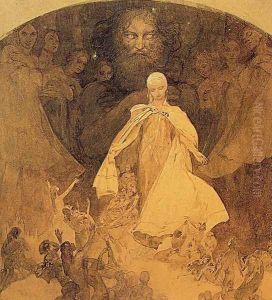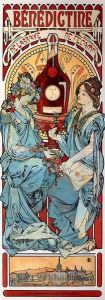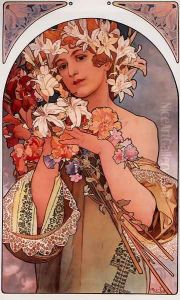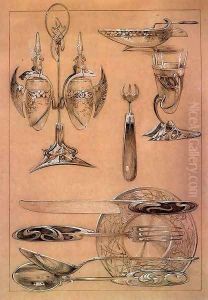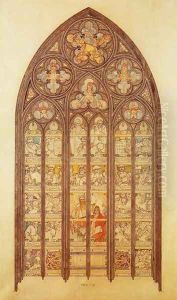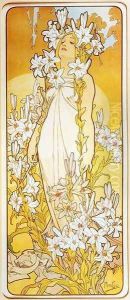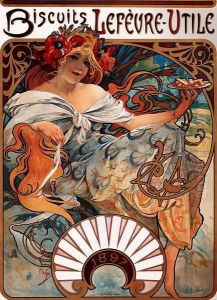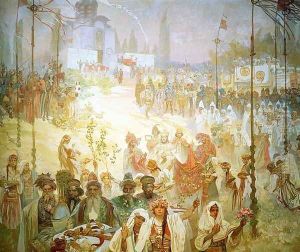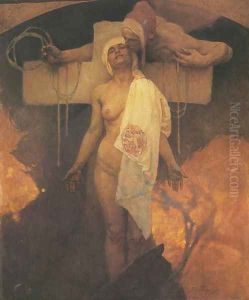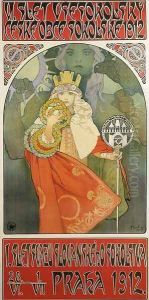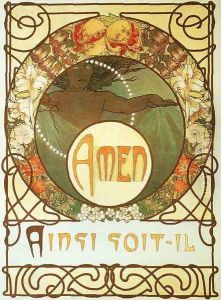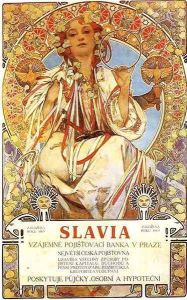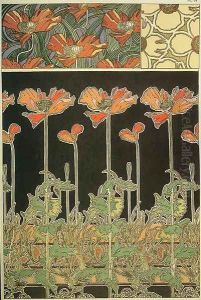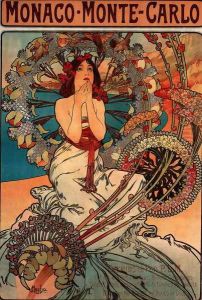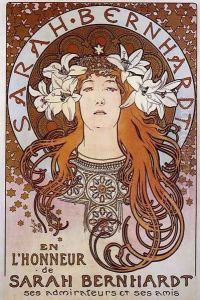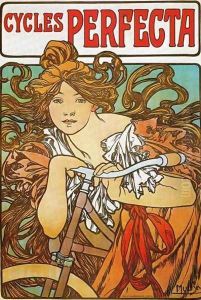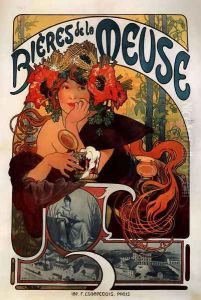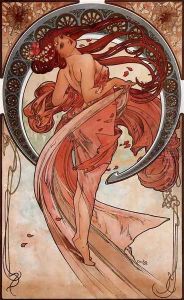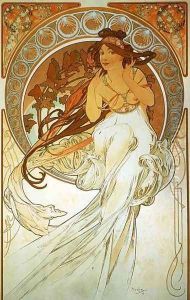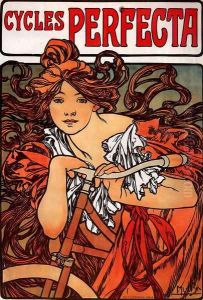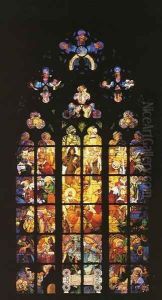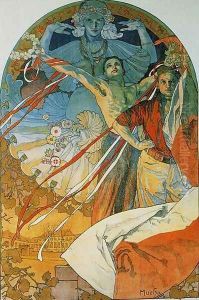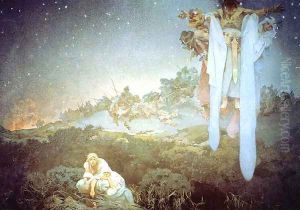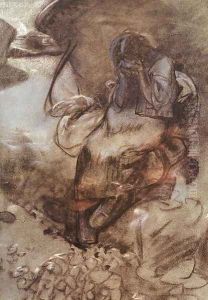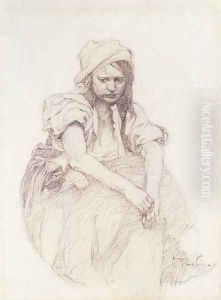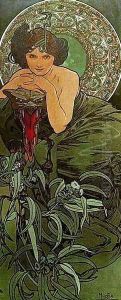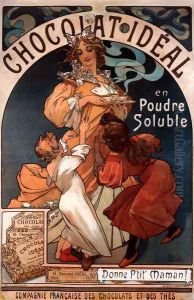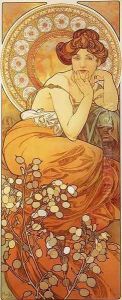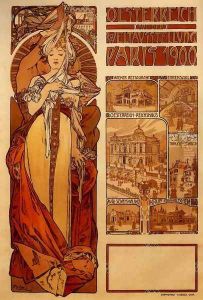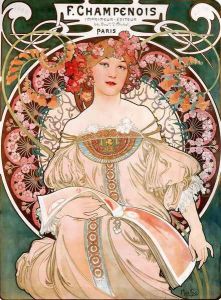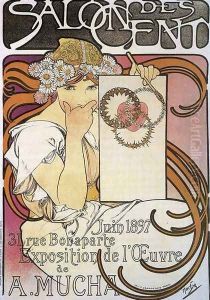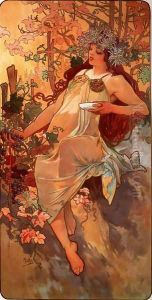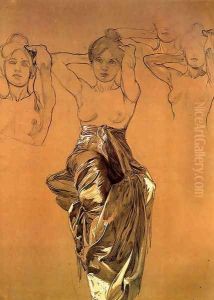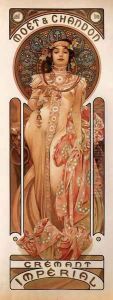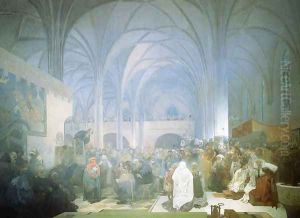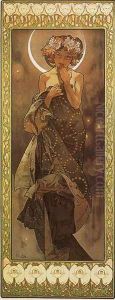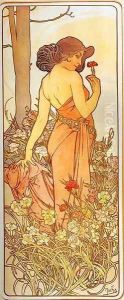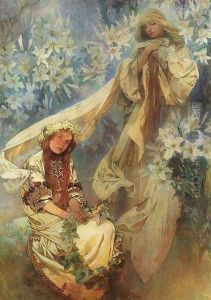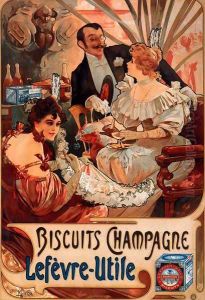Alphonse Maria Mucha Paintings
Alphonse Maria Mucha was a Czech painter, illustrator, and graphic artist, living in Paris during the Art Nouveau period, who is best known for his distinctly stylized and decorative theatrical posters, particularly those of French actress Sarah Bernhardt. Mucha was born on July 24, 1860, in the town of Ivančice, Moravia, then part of the Austrian Empire, now in the Czech Republic. He showed early talent in drawing, but his formal education in art was limited due to his family's financial constraints.
Initially, Mucha worked at decorative painting jobs in Moravia, mostly painting theatrical scenery. His big break came in 1894, when he was commissioned to create a poster for Sarah Bernhardt's play 'Gismonda.' The poster was a huge success and established Mucha's reputation, leading to a six-year contract with Bernhardt and a series of stunning posters, illustrations, decorative panels, and designs that became synonymous with the Art Nouveau movement. His style is characterized by flowing lines, pastel colors, and the frequent use of beautiful, ethereal women surrounded by whiplash curves and natural elements.
Mucha's work extended beyond posters and included designs for jewelry, carpets, and wallpaper. His philosophy was deeply rooted in the idea that art should be a part of everyday life, and thus he contributed significantly to the design of a wide array of household items, making art accessible to the public.
In 1904, Mucha moved to the United States, where he taught and continued his work, although he never achieved the same level of fame there as he had in Europe. He returned to the Czech lands in 1910 and focused on his nationalist work, including his series of 20 large historical paintings titled 'The Slav Epic,' which depicted the history of the Slavic people. This work was completed in 1928 and is considered his masterpiece.
Alphonse Mucha's influence on the visual arts was considerable. His innovative use of color and composition, his integration of a wide range of decorative elements into his artwork, and his strong identity with the spirit of Art Nouveau have left a lasting legacy. He passed away on July 14, 1939, in Prague, just before the outbreak of World War II. Today, his work is celebrated for its beauty and elegance, and he is recognized as one of the key figures in the Art Nouveau movement.
